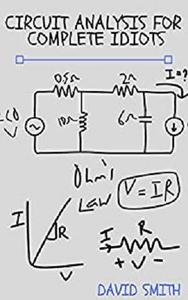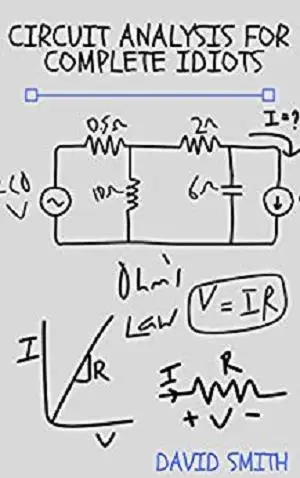Circuit Analysis for Complete Idiots (Electrical Engineering for Complete Idiots) by David Smith
English | May 17, 2019 | ISBN: N/A | ASIN: B07RXD35JS | 165 pages | AZW3 | 5.26 Mb
English | May 17, 2019 | ISBN: N/A | ASIN: B07RXD35JS | 165 pages | AZW3 | 5.26 Mb
In today’s world, there’s an electronic gadget for everything and inside these gadgets are circuits, little components wired together to perform some meaningful function. Have you wondered how a led display sign works or how a calculator works or toy cars work? How is it possible?? Answer, all because of electrical circuits. These tiny components when arranged in certain manner can do wonders. Fascinating isn’t it? Our fascination with gadgets and reliance on machinery is only growing day by day and hence from an engineering perspective, it is absolutely crucial to be familiar with the analysis and designing of such Circuits, at least identify components.
Circuit analysis is one of basic subjects in engineering and particularly important for Electrical and Electronics students. So circuit analysis is a good starting point for anyone wanting to get into the field. It is a very easy subject to learn and understand, but messing up these ideas or misunderstanding them, will lead to a lot of headache in other subjects. In this book we provide a concise introduction into basic Circuit analysis. A basic knowledge of Calculus and some Physics are the only prerequisites required to follow the topics discussed in the book. We've tried to explain the various fundamental concepts of Circuit theory in the simplest manner without an over reliance on math. Also, we have tried to connect the various topics with real life situations wherever possible. This way even first timers can learn the basics of Circuit theory with minimum effort. Hopefully the students will enjoy this different approach to Circuit Analysis. The various concepts of the subject are arranged logically and explained in a simple reader-friendly language with illustrative figures.
This book is not meant to be a replacement for those standard Circuit theory textbooks, rather this book should be viewed as an introductory text for beginners to come in grips with advanced level topics covered in those books. This book will hopefully serve as inspiration to learn Circuit theory in greater depths.



